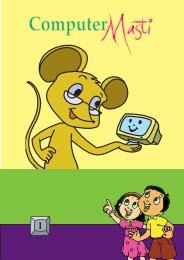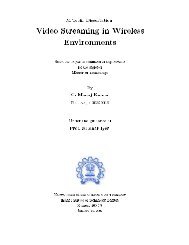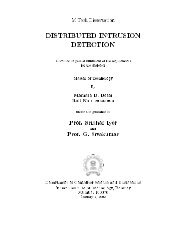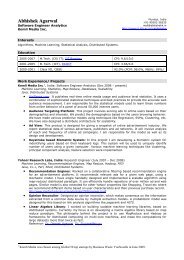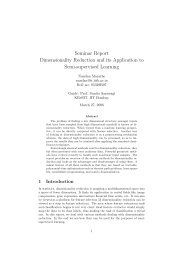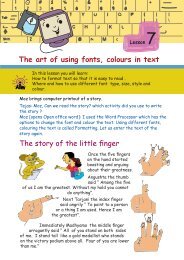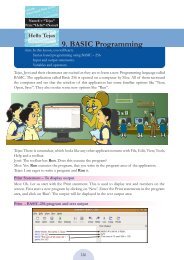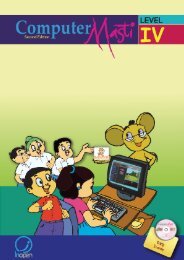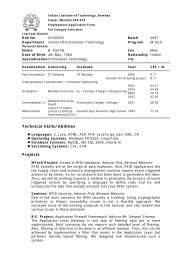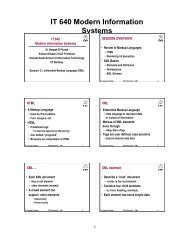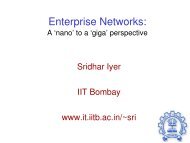A Method to Construct Counterexamples for Greedy Algorithms
A Method to Construct Counterexamples for Greedy Algorithms
A Method to Construct Counterexamples for Greedy Algorithms
You also want an ePaper? Increase the reach of your titles
YUMPU automatically turns print PDFs into web optimized ePapers that Google loves.
Steiner Tree problems. Post-test contained Matching<br />
and Max-Leaf problems. After the pre-test, Students A<br />
and B were taught the anchor method by using the pre-test<br />
problems as illustrative examples. Student C was not taught<br />
the anchor method but was simply given the solutions <strong>to</strong><br />
pre-test problems.<br />
Questions on teachability. We answer questions related<br />
<strong>to</strong> the teachability of the method based on the observations<br />
from the above experiments.<br />
How difficult is it <strong>for</strong> a student <strong>to</strong> come up with greedy<br />
counterexamples?<br />
In Exp. 1, only 19/38 gave the greedy counterexample <strong>for</strong><br />
the MaxIndependent set problem, while 37/38 students<br />
were able <strong>to</strong> design a weak counterexample. In Exp. 2 pretest,<br />
only student A was able <strong>to</strong> solve the the MaxIndependent<br />
set problem. The Steiner tree problem was solved by<br />
students A and C.<br />
However, none of the students in both the experiments<br />
constructed a counterexample with O(n) approximation ratio<br />
<strong>for</strong> the MIS problem. This shows that it is generally difficult<br />
<strong>for</strong> students <strong>to</strong> construct counterexamples <strong>for</strong> greedy<br />
algorithms, especially the ones with good approximation ratios.<br />
What heuristics do students commonly apply while constructing<br />
counterexamples?<br />
These observations are based on Exp. 2:<br />
• Force the algorithm <strong>to</strong> make the wrong choice first.<br />
This by far seems <strong>to</strong> be the most popular heuristic.<br />
For the MIS problem, all three students wrote a star<br />
first and tried <strong>to</strong> tweak the example such that picking<br />
the central vertex leads <strong>to</strong> a bad choice. This heuristic<br />
was unsuccessful <strong>for</strong> the MIS problem.<br />
• Weaken the input. For example, instead of building a<br />
Steiner tree with unweighted vertices student A first<br />
built a counterexample with weighted graph and then<br />
converted it in<strong>to</strong> an unweighted graph.<br />
• Work backwards from the solution. Student B and C<br />
reported having tried this heuristic on MIS and Matching<br />
problem, respectively.<br />
In Exp. 2, were students in the experimental group able <strong>to</strong><br />
apply the anchor method in the post-test?<br />
Note that applying the anchor method consists of two<br />
steps: coming up with the weak counterexample and attaching<br />
a suitable auxiliary structure. Students A and B were<br />
able <strong>to</strong> construct weak counterexamples <strong>for</strong> Matching and<br />
Max-leaf problems. Both the students could construct the<br />
counterexample <strong>for</strong> the Matching problem by attaching a<br />
complete graph K 4. However, only student A was able <strong>to</strong><br />
attach the auxiliary structure <strong>for</strong> Max-leaf problem. Student<br />
B was not able <strong>to</strong> think of using a complete binary tree<br />
as an auxiliary structure. This suggests that step 2 is harder<br />
than step 1 and requires some practice.<br />
How did student C fare in the post-test? Student C was<br />
unable <strong>to</strong> solve both the Matching and the Max-leaf<br />
problems. During the post-test C looked at solutions <strong>to</strong> the<br />
pre-test problems <strong>to</strong> see if he could construct a counterexample<br />
along the same lines. He mostly tried the heuristics<br />
listed above and some ad-hoc methods be<strong>for</strong>e giving up.<br />
This shows that it is not easy <strong>to</strong> intuit the anchor method<br />
just by looking at the solutions.<br />
6. CONCLUSION<br />
A couple of points in favor of the anchor method are<br />
as follows. Techniques like greedy, divide-and-conquer, dynamic<br />
programming, etc. are quite general and hence the<br />
student does not usually know when a particular method<br />
is applicable. Unlike these techniques, the anchor method<br />
is tailor-made <strong>for</strong> constructing counterexamples <strong>for</strong> greedy<br />
algorithms, so there is a greater chance of recall. In the<br />
examples considered, our approach usually led <strong>to</strong> a general<br />
counterexample with good approximation ratio. No student<br />
gave a general counterexample <strong>for</strong> the greedy algorithm in<br />
our experiments.<br />
We observed that students sometimes fail <strong>to</strong> acknowledge<br />
plausible counterexamples as legitimate counterexamples<br />
and seek <strong>to</strong> get a definitive counterexample directly.<br />
Hence, we recommend that the distinction between a plausible<br />
and a definitive counterexample be made clear <strong>to</strong> students.<br />
The second step of attaching an appropriate auxiliary<br />
structure is still descriptive. What constitutes an auxiliary<br />
structure is problem-specific. For the examples discussed,<br />
the auxiliary structures turned out <strong>to</strong> be simple (complete<br />
graphs, complete binary tree, etc). But other problems<br />
may require more sophisticated auxiliary structures. We believe<br />
that a technique <strong>to</strong> identify auxiliary structures would<br />
strengthen the anchor method.<br />
7. ACKNOWLEDGMENTS<br />
We thank Soumitra Pal <strong>for</strong> suggesting improvements <strong>to</strong><br />
the presentation of the paper.<br />
8. REFERENCES<br />
[1] L. Cohen, L. Manion, and K. Morrison. Research<br />
<strong>Method</strong>s in Education. Routledge, 6 edition, 2007.<br />
[2] M. R. Garey and D. S. Johnson. Computers and<br />
Intractability: A Guide <strong>to</strong> NP-Completeness. Freeman,<br />
San Francisco, CA, USA, 1979.<br />
[3] D. Ginat. The greedy trap and learning from mistakes.<br />
SIGCSE Bull., 35:11–15, January 2003.<br />
[4] S. Guha and S. Khuller. Approximation algorithms <strong>for</strong><br />
connected dominating sets. Algorithmica, 20:374–387,<br />
1996.<br />
[5] J. Kleinberg and E. Tardos. Algorithm Design. Addison<br />
Wesley, second edition, 2006.<br />
[6] J. V. Oakhill and P. N. Johnson-Laird. Rationality,<br />
memory and the search <strong>for</strong> counterexamples. Cognition,<br />
20(1):79–94, 1985.<br />
[7] S. Sakai, M. Togasaki, and K. Yamazaki. A note on<br />
greedy algorithms <strong>for</strong> the maximum weighted<br />
independent set problem. Discrete Appl. Math.,<br />
126:313–322, March 2003.<br />
[8] R. Sedgewick and K. Wayne. Undirected graphs<br />
applications. URL (accessed 2011-08-17).<br />
http://www.cs.prince<strong>to</strong>n.edu/~rs/AlgsDS07/<br />
11UndirectedGraphs.pdf.<br />
[9] D. B. West. Introduction <strong>to</strong> Graph Theory. Prentice<br />
Hall, 2 edition, September 2000.



